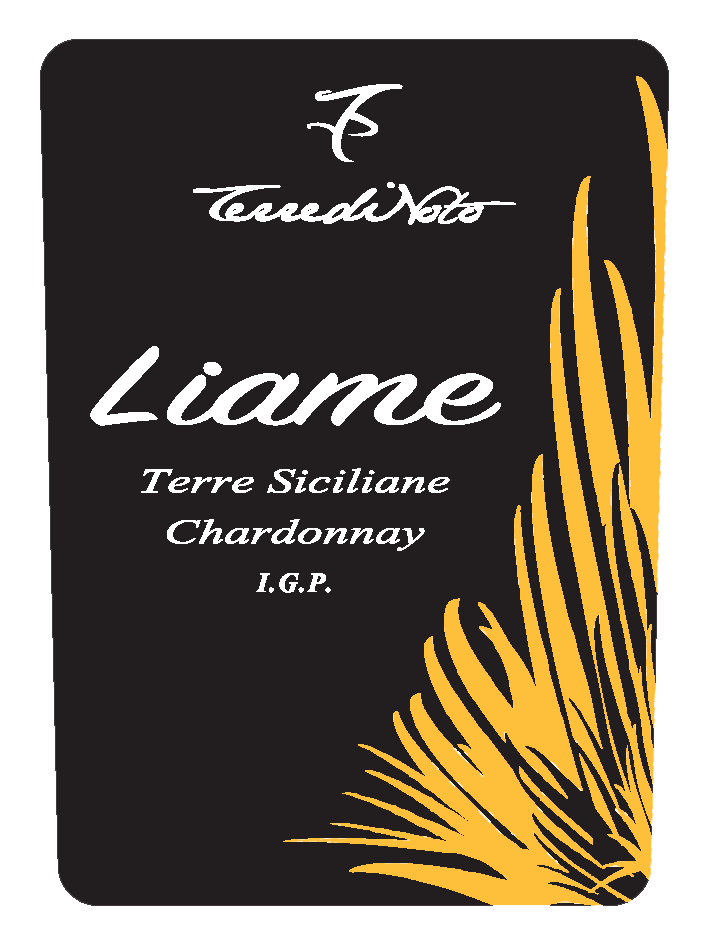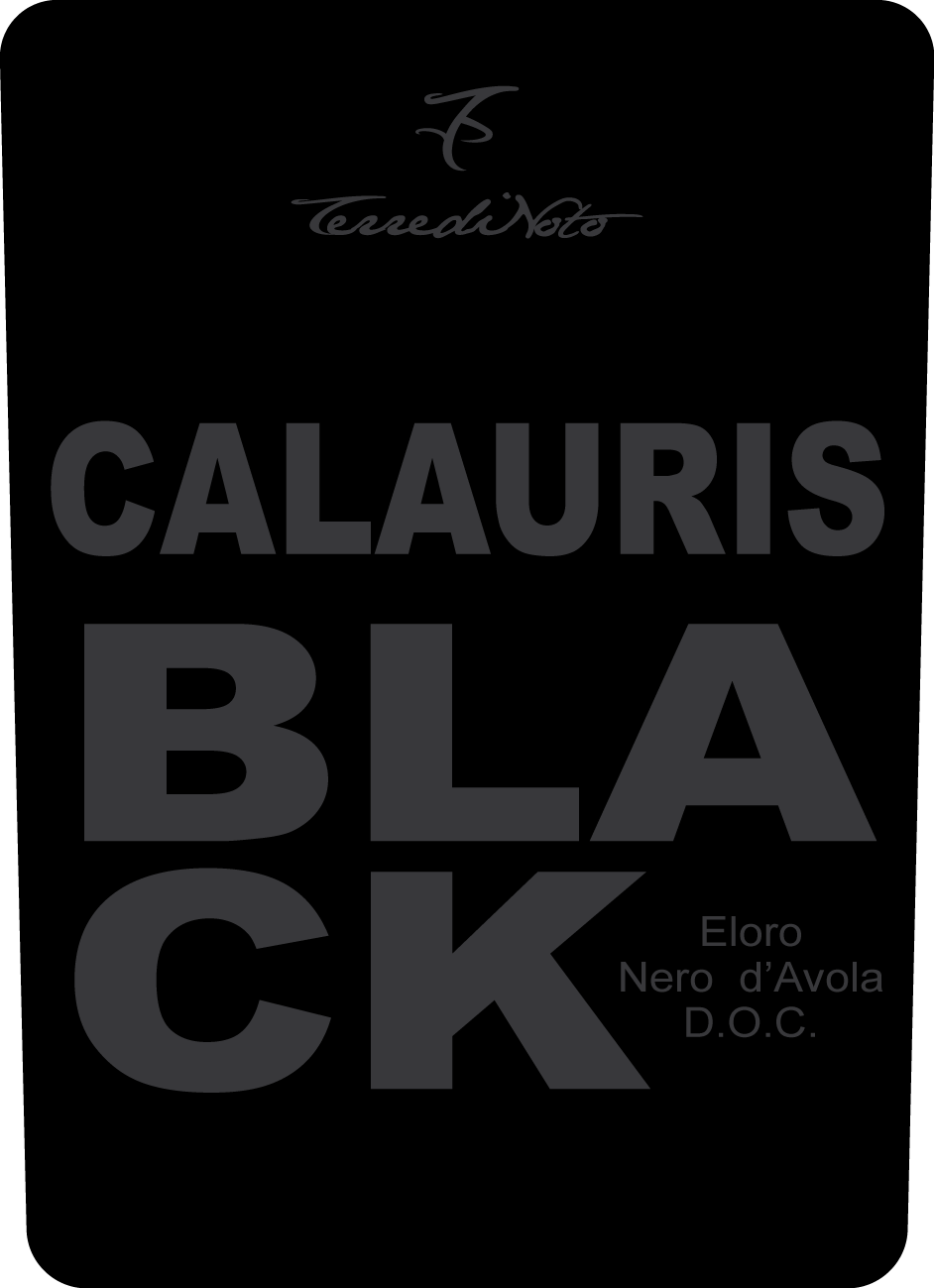Our wines

From the Arabic “Blata”, the Balata is a stone slab. This is the type of soil that characterizes our vineyards: a thin superficial layer of arable land with a limestone matrix and an underlying rock layer, commonly called “Balata”, white in colour and rich in carbonates.
12.5 – 13% VOL – Total acidity 6.5 – pH 3.2
Color: pale straw yellow with slight greenish reflections
Nose: aromas of fresh fruit with white pulp and white flowers, slight balsamic hint
Mouth: fresh, savory and pleasantly acidic mineral, well balanced
Aging: to be appreciated young and up to about 2 – 3 years, discovering its evolution
Serving temperature: 8 – 10 ° C
Type of plant: irrigation counter-espalier
Pruning system: spurred cordon on old vineyards, guyot on new plants
Soil type: moderately calcareous
Fertilization: organic, green manure
Altitude: 40 m asl
Distance from the sea: 3.5 km from the Mediterranean Sea
Plant density: 5000 plants per hectare
Total hectares: Chardonnay 4 – Grillo 2
Harvest period: 1st – 15th September
Harvesting method: night mechanics

BALATA ROSATO
From the Arabic “Blata”, the Balata is a stone slab. This is the type of soil that characterizes our vineyards: a thin superficial layer of arable land with a limestone matrix and an underlying rock layer, commonly called “Balata”, white in colour and rich in carbonates.
12 – 13% VOL – Total acidity 6.6 – pH 3.2
Color: onion skin pink
Nose: notes of strawberry and pomegranate, red berry fruit
Mouth: fresh, savory, with a good sensation of fullness and pleasantly acidulous
Aging: to be enjoyed young and up to about 4 years, discovering its evolution
Serving temperature: 8 – 10 ° C
Type of plant: irrigation counter-espalier
Pruning system: spurred cordon on old vineyards, guyot on new plants
Soil type: moderately calcareous
Fertilization: organic, green manure
Altitude: 40 m asl
Distance from the sea: 3.5 km from the Mediterranean Sea
Plant density: 5000 plants per hectare
Total hectares: Nero d’Avola 8 – Syrah 5 – Merlot 3
Harvest period: 1st – 15th September
Harvesting method: night mechanics

ACKNOWLEDGMENTS
“Balata Rosato” Nero d’Avola IGP Terre Siciliane 2014:


BALATA ROSSO
From the Arabic “Blata”, the Balata is a stone slab. This is the type of soil that characterizes our vineyards: a thin superficial layer of arable land with a limestone matrix and an underlying rock layer, commonly called “Balata”, white in colour and rich in carbonates.
13.5% VOL – Total acidity 6.5 – pH 3.4
Color: dark garnet red with violet reflections
Nose: aromatic profile of the grapes of origin, mainly Nero d’Avola in combination with Merlot and Syrah which soften the structure and make it pleasant from the first months in the bottle. Enveloping aroma of ripe red fruits.
Mouth: soft structure, fresh tannins and pleasant acid note.
Aging: to be enjoyed young and up to about 6 years, discovering its evolution.
Serving temperature: 16 – 18 ° C
Type of plant: irrigation counter-espalier
Pruning system: spurred cordon on old vineyards, guyot on new plants
Soil type: moderately calcareous
Fertilization: organic, green manure
Altitude: 40 m asl
Distance from the sea: 3.5 km from the Mediterranean Sea
Plant density: 5000 plants per hectare
Total hectares: Nero d’Avola 8 – Syrah 5 – Merlot 3
Harvest period: 1st – 15th September
Harvesting method: night mechanics

ACKNOWLEDGMENTS
“Balata Rosso” Nero d’Avola IGP Terre Siciliane 2015:
“Balata Rosso” IGP Terre Siciliane Rosso 2018:
LIAME
CHARDONNAY – MUSCAT
Liame! Plants with a gentle and elegant appearance but with a strong intriguing character, capable of enveloping with strength… They well represent the wine to which they lend their name.
13.5% VOL – Total acidity 6.4 – pH 3.3
Color: straw yellow with slight greenish reflections.
Nose: if it is young, this wine has intense aromas of tropical fruit, pineapple and typical notes of Moscato grapes that evolve in the following years towards elegant complex aromas of ripe fruit with yellow pulp and balsamic notes that give the impression of a passage Wood.
Mouth: fresh, mineral and persistent when young, it becomes soft and very full with the years.
Aging: to be appreciated young and up to about 4 – 5 years, discovering its evolution towards more mature scents.
Serving temperature: 8 – 10 ° C
Type of plant: irrigation counter-espalier
Pruning system: spurred cordon on old vineyards, guyot on new plants
Soil type: moderately calcareous
Fertilization: organic, green manure
Altitude: 40 m asl
Distance from the sea: 3.5 km from the Mediterranean Sea
Plant density: 5000 plants per hectare
Total hectares: Chardonnay 4 – Moscato di Noto 2
Harvest period: end of August
Harvesting method: night mechanics

ACKNOWLEDGMENTS
Liame I.G.P. Terre Siciliane Chardonnay 2017


ACHETA
GRILLO
Cool as a summer evening in the shade of a carob tree.
13% VOL – Total acidity 6.5 – pH 3.3
Color: straw yellow with slight greenish reflections.
Nose: elegant and moderate hints of exotic fruit and white flowers.
Mouth: fresh, pleasantly sour, soft and persistent.
Aging: to be enjoyed young and up to about 3 years, discovering its evolution towards more mature aromas.
Serving temperature: 8 – 10 ° C
Type of plant: irrigation counter-espalier
Pruning system: spurred cordon on old vineyards, guyot on new plants
Soil type: moderately calcareous
Fertilization: organic, green manure
Altitude: 40 m asl
Distance from the sea: 3.5 km from the Mediterranean Sea
Plant density: 5000 plants per hectare
Total hectares: 2
Harvest period: end of August
Harvesting method: night mechanics
SALICORNIA
DRY MOSCATO DI NOTO DOP
“Salicòrnia or sea asparagus is a spontaneous plant that grows near stagnations of brackish water, with a crunchy-savory flavor. It goes well with dry Moscato, a refined wine for starters based on seafood and raw fish”
13 % VOL – Total acidity 5.7 – pH 3.2
Color: light straw yellow with slight green reflections
Nose: elegant and exuberant, the complex aroma of the Moscato is made up of various notes including white peach, jasmine, sage and citrus flowers
Mouth: persistent, tasty and very fresh
Aging: to be appreciated young by discovering its evolution in the following years
Serving temperature: 8 – 10 ° C
Type of plant: irrigation counter-espalier
Pruning system: spurred cordon on old vineyards, guyot on new plants
Soil type: moderately calcareous
Fertilization: organic, green manure
Altitude: 40 m asl
Distance from the sea: 3.5 km from the Mediterranean Sea
Plant density: 5000 plants per hectare
Total hectares: 2
Harvest period: mid-August
Harvesting method: night mechanics



TIMPULATA
SYRAH – PETIT VERDOT IGP TERRE SICILIANE
Total acidity 5,5 – pH 3.40
Look: dark burgundy red.
Smell: Intense sweet notes of vanilla, plum and ripe cherry.
Taste: Despite being a wine with great structure, it is soft and pleasant, with well-present and fresh tannins accompanied by good acidity, typical of red wines from our area, which ensures good longevity.
Serving temperature: 16 – 18 ° C
Type of plant: counter-espalier irrigation
Pruning system: spurred cordon on old vineyards, guyot on new plantings
Soil type: moderately calcareous for the Syrah, stony and rich in organic substances for the petit verdot
Fertilization: organic, green manure
Altitude: 40 m asl on average
Distance from the sea: 3,5 km from the Mediterranean sea
Plant density: 5000 plants per hectare
Total hectares: Syrah 4,2 – Petit Verdot 3,4
Harvest period: mid-September the Syrah, end of September the Petit Verdot
Harvesting method: nocturnal mechanical harvesting

NICHÈA
DOP NOTO NERO D’AVOLA
Baroque art is the redundant exasperation of forms, a desire to make fun of everything that belongs to the classical taste Nichea re-proposes this concept, presenting a Nero d’Avola that has its roots in good tradition but “plays”, envelops and conquers even the youngest palates.
14 % VOL – Total acidity 6.8 – pH 3.4
Color: dark garnet red with violet reflections
Nose: aromatic profile of the original grape, prevalent cherry and red fruits Light notes of vanilla and cocoa deriving from the wood.
Mouth: with a great structure but extremely balanced thanks to the soft and ripe tannins, the characteristic acidity of Nero d’Avola is pleasant, which makes its important alcohol content manageable and minimally invasive.
Aging: to be enjoyed young and up to about 8 years, discovering its evolution.
Serving temperature: 16 – 18 ° C
Type of plant: irrigation counter-espalier
Pruning system: spurred cordon on old vineyards, guyot on new plants
Soil type: moderately calcareous
Fertilization: organic, green manure
Altitude: 40 m asl
Distance from the sea: 3.5 km from the Mediterranean Sea
Plant density: 5000 plants per hectare
Total hectares: 8
Harvest period: 20 – 30 September
Harvesting method: night mechanics
ACKNOWLEDGMENTS
Nichea” DOP Noto Nero d’Avola 2014:
- Silver medal at the “Concours Mondial des Féminalise 2017”
- Gold medal in the competition “The Selection of the Mayor 2017”
- 88 points awarded by the “Nero d’Avola Wine” guide
- Douja d’Or Medal at the “45th National Douja d’Or Wine Competition”
“Nichea” DOP Noto Nero d’Avola 2015:
- Silver medal in the international competition “Catavinum Wine and Spirits Competition” 2018
- Silver medal at the “Concours Mondial des Féminalise 2018”
- Silver medal at the “Concours Mondial de Bruxelles 2018”
- 86 points awarded by “5 Star Wines Vinitaly”
- Douja d’Or Medal at the “46th National Douja d’Or Wine Competition”
- Silver medal in the 2018 “Venus Callipygia” competition
“Nichea” DOP Noto Nero d’Avola 2016:


CALAURIS BLACK
DOP ELORO NERO D’AVOLA
“A wine that for 3000 years has crossed time by sliding on it”
14.5 – 15 % VOL – Total acidity 6.8 – pH 3.4
Color: dark garnet red with violet reflections
Nose: aromatic profile of the original grape, strong marasca cherry in alcohol, typical of mature Nero d’Avola. Barely perceptible notes of wood and licorice, pleasant scents of alcohol.
Mouth: impressive structure characterized by well pronounced but velvety tannins at the same time.
Aging: to be appreciated young and up to about 8 – 10 years, discovering its evolution.
Serving temperature: 16 – 18 ° C
Type of plant: irrigation counter-espalier
Pruning system: spurred cordon on old vineyards, guyot on new plants
Soil type: moderately calcareous
Fertilization: organic, green manure
Altitude: 40 m asl
Distance from the sea: 3.5 km from the Mediterranean Sea
Plant density: 5000 plants per hectare
Total hectares: 8
Harvest period: September 30th – October 15th
Harvesting method: night mechanics

ACKNOWLEDGMENTS
“Calauris Black” Doc Eloro Nero d’Avola 2015:
- Bronze medal in the “Venere Callipigia” competition 2018
- Douja d’Or Medal at the “46th National Douja d’Or Wine Competition”
- Gold medal in the international competition “The Selection of the Mayor” 2018
- Gold medal in the international competition “Catavinum Wine and Spirits Competition” 2018
- 88 points awarded by “5 Star Wines Vinitaly”
“Calauris Black” Doc Eloro Nero d’Avola 2016:
“Calauris Black” Doc Eloro Nero d’Avola 2017:
MAROSO
SPARKLING WINE EXTRA DRY WHITE
11.5% VOL – Total acidity 6.8 – pH 3.2
Color: pale straw yellow with slight greenish reflections, persistent perlage with small bubbles
Nose: fruity of Grillo and Chardonnay grapes of origin, hints of white pulp fruit and white plum, notes of fermentation yeasts.
Mouth: harmonious, savory and acidulous and persistent
Aging: to be appreciated young and up to about 2 – 3 years, discovering its evolution
Serving temperature: 4 ° C
Type of plant: irrigation counter-espalier
Pruning system: spurred cordon on old vineyards, guyot on new plants
Soil type: moderately calcareous
Fertilization: organic, green manure
Altitude: 40 m asl
Distance from the sea: 3.5 km from the Mediterranean Sea
Plant density: 5000 plants per hectare
Total hectares: Nero d’Avola 8 – Merlot 3
Harvest period: first half of August
Harvesting method: night mechanics


MAROSA
SPARKLING WINE EXTRA DRY ROSE’
11.5% VOL – Total acidity 6.8 – pH 3.2
Color: pomegranate pink, persistent perlage with small bubbles
Nose: fruity of the Nero d’Avola and Merlot grapes of origin, slight hints of strawberry, raspberry, currant and notes of fermentation yeasts
Mouth: harmonious, savory and acidulous and persistent
Aging: to be appreciated young and up to about 2 – 3 years, discovering its evolution
Serving temperature: 4 ° C
Type of plant: irrigation counter-espalier
Pruning system: spurred cordon on old vineyards, guyot on new plants
Soil type: moderately calcareous
Fertilization: organic, green manure
Altitude: 40 m asl
Distance from the sea: 3.5 km from the Mediterranean Sea
Plant density: 5000 plants per hectare
Total hectares: Chardonnay 4 – Grillo 2
Harvest period: second half of August
Harvesting method: night mechanics
ATTINIA
CLASSIC METHOD BRUT ROSÉ SPARKLING WINE IGT TERRE SICILIANE
11.5 % VOL – Total acidity – pH 3
Look: Pale pink reminding of peach blossoms. Persistent perlage with small bubbles.
Smell: Elegant aromas of violet, almond, bread crust and nutmeg.
Taste: Savory and balanced, pleasantly acidic and persistent.
Serving temperature: 4 ° C
Type of plant: counter-espalier irrigation
Pruning system: guyot
Soil type: moderately calcareous
Fertilization: organic, green manure
Altitude: 40 m asl
Distance from the sea: 3.5 km from the Mediterranean Sea
Plant density: 5000 plants per hectare
Total hectares: 8
Harvest period: second half of August
Harvesting method: by hand in the early hours of morning



LAPALICCA
PASSITO MUSCAT OF NOTO
Bees smell the scents of ripe grapes and are attracted to them. These tiny insects, notoriously gourmets, are true admirers of this precious juice and in harmony with nature, they appreciate its aromas and flavours before and in spite of man.
12.5 – 13% VOL – Total acidity 7.9 – pH 3.3
Color: intense golden yellow.
Nose: elegant, with evident hints of honey and citrus notes, candied orange peel and dried figs.
Mouth: sweet, soft and enveloping with great freshness and persistence.
Aging: to be appreciated young and up to about 6 years, discovering its evolution towards more mature aromas.
Serving temperature: 8 – 10 ° C
Type of plant: irrigation counter-espalier
Pruning system: spurred cordon on old vineyards, guyot on new plants
Soil type: moderately calcareous
Fertilization: organic, green manure
Altitude: 40 m asl
Distance from the sea: 3.5 km from the Mediterranean Sea
Plant density: 5000 plants per hectare
Total hectares: 2
Harvest period: mid-August
Method of collection: by hand

ACKNOWLEDGMENTS
“Lapalicca” Moscato Passito di Noto 2013:
- Silver medal at the “Concours Mondial de Bruxelles 2015”
- Diploma of great mention at the “Vinitaly International Wine Competition”
“Lapalicca” Moscato Passito di Noto 2015:
- Silver medal at the “Concours Mondial de Bruxelles 2017”
- Gold medal in the competition “The Selection of the Mayor 2016”
- Gold medal in the “Mundus Vini 2017” competition
- 92 points awarded by the “5 Star Wines Vinitaly 2017” guide
“Lapalicca” Moscato Passito di Noto 2018:
CALAURIS RACINE
LIMITED EDITION
“It’s the time you lost for your rose that made your rose so important” – Antoine de Saint-Exupéry –
Soil type: white limestone matrix, with medium dough texture
Altitude and location: 40-60 metres o.s.l.
Place of production: c.da Coste Fredde, municipality of Noto
Plant density: 5.000 plants/ha
Grapes: Nero d’Avola in purity
Aging in wood: 12 months in 1000 liter barrels
Colour: deep red with purple reflections
Olfactory and gustatory sensations: aromas from the original grapes and ripe red berries Soft, full and enveloping taste
Alcohol content: 13,5 – 14 % vol. in relation to the vintage
Year: 2015


